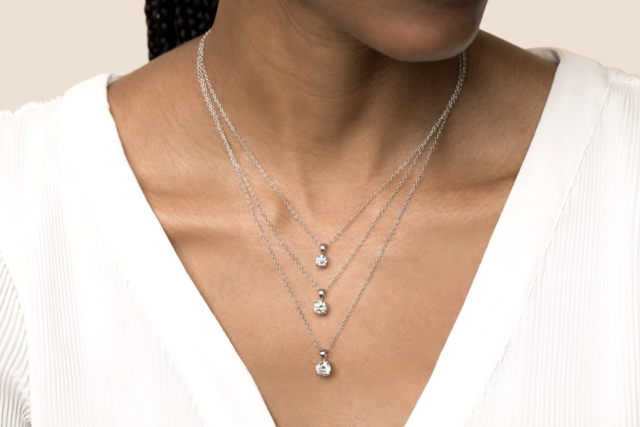In today’s age, the eco-conscious shopper is becoming more and more common. These shoppers are looking for environmentally-friendly options that support their morals. Are you among these shoppers?
If so, you may find that it’s difficult to consistently source an eco-friendly option, especially when you’re in the market for a diamond. Luckily, ethical engagement rings can also be eco-friendly engagement rings when you purchase a lab-grown diamond.
This guide will break down the top environmental benefits of choosing lab-grown diamonds. Let’s dive in!
1. Lab-grown diamonds don’t disrupt and destroy ecosystems.
Diamond mines aren’t located exclusively on land that is barren and deserted. They are dug wherever there is the highest chance diamonds naturally occur. As a result of these practices, mines are known to cause substantial disruption to or the complete destruction of the local ecosystems they inhabit.
As mining operations are quite large, most animals in the area where a mine is laid are displaced and their homes may be demolished as the land is cleared for mining. Air quality near the mine may be poorer, as well. In short, the sheer scale of diamond mining operations can be the equivalent of a death-sentence for the local ecosystem.
2. Lab-Grown diamonds can be produced in carbon neutral facilities.
One of the most important efforts in the fight against the climate crisis is a commitment to neutral or net negative production across all industries. Unfortunately, the change has been slow and many industries have not made meaningful shifts toward carbon neutrality.
However, the lab-grown diamond industry has already made meaningful gains toward carbon neutrality. In fact, some lab-grown diamond producers have already succeeded in facilitating a carbon neutral process for creating lab-grown diamonds. Astonishingly, there have even been cases of net negative carbon dioxide emissions in the diamond producing industry.
As the fight against climate change has reached a critical stage, the choice to support carbon neutral or negative companies and products is not just an eco-friendly decision, it’s an ethical buying option. So, whether consumers are in the market for a radiant-cut engagement ring or another piece of diamond jewelry, lab-grown diamonds serve as both an ethical and environmentally-friendly option.
3. For every diamond carat mined, 250 tonnes (or more) of earth is shifted.
There are few notable geographic features that can be seen from space: The Great Wall of China, The Great Pyramids, and the absolutely massive holes dug by diamond mining companies.
These holes are a result of the 250 tonnes of earth shifting to uncover a single carat of diamond. This displacement of the earth can cause detrimental effects on the local environment, such as soil erosion. Inability to foster life or support the growth of new foliage and flora is a serious consequence of soil erosion. Plants won’t grow and the entire ecosystem will fail.
4. Lab-grown diamonds don’t result in water pollution.
Water pollution is a serious problem, especially within communities that lack convenient access to a clean water source. Unfortunately, one of the side effects of mining the earth for diamonds is acid mine drainage.
When minerals from the earth and rocks are displaced by mining practices, their minerals can seep into other resources, such as local bodies of water. As a result, these bodies of water are polluted with acid mine drainage making them unsafe to drink. Worse yet, acid mine drainage can cause displacement, kill wildlife, and harm plants.
5. The process used to create lab-grown diamonds embodies the “reduce, reuse, recycle” credo.
As the name suggests, lab-grown diamonds are created in a lab setting, rather than mined from the earth’s depths, like their counterparts.
The process used to create lab-grown diamonds mimics the natural processes that cause carbon to transform into diamonds. Extreme pressure and heat are applied to a diamond seed, causing more diamonds to form from the carbon-rich atmosphere inside the machines.
That’s right — diamond seeds are used to create new diamonds! Just a diamond sliver is all that’s needed to create new diamonds, it’s a testament to the three-Rs.

Conclusion
Making an eco-friendly shopping decision can be challenging, especially when it comes to purchasing luxury goods, such as diamonds. Fortunately, lab-grown diamonds provide consumers with an ethical and eco-friendly option.




